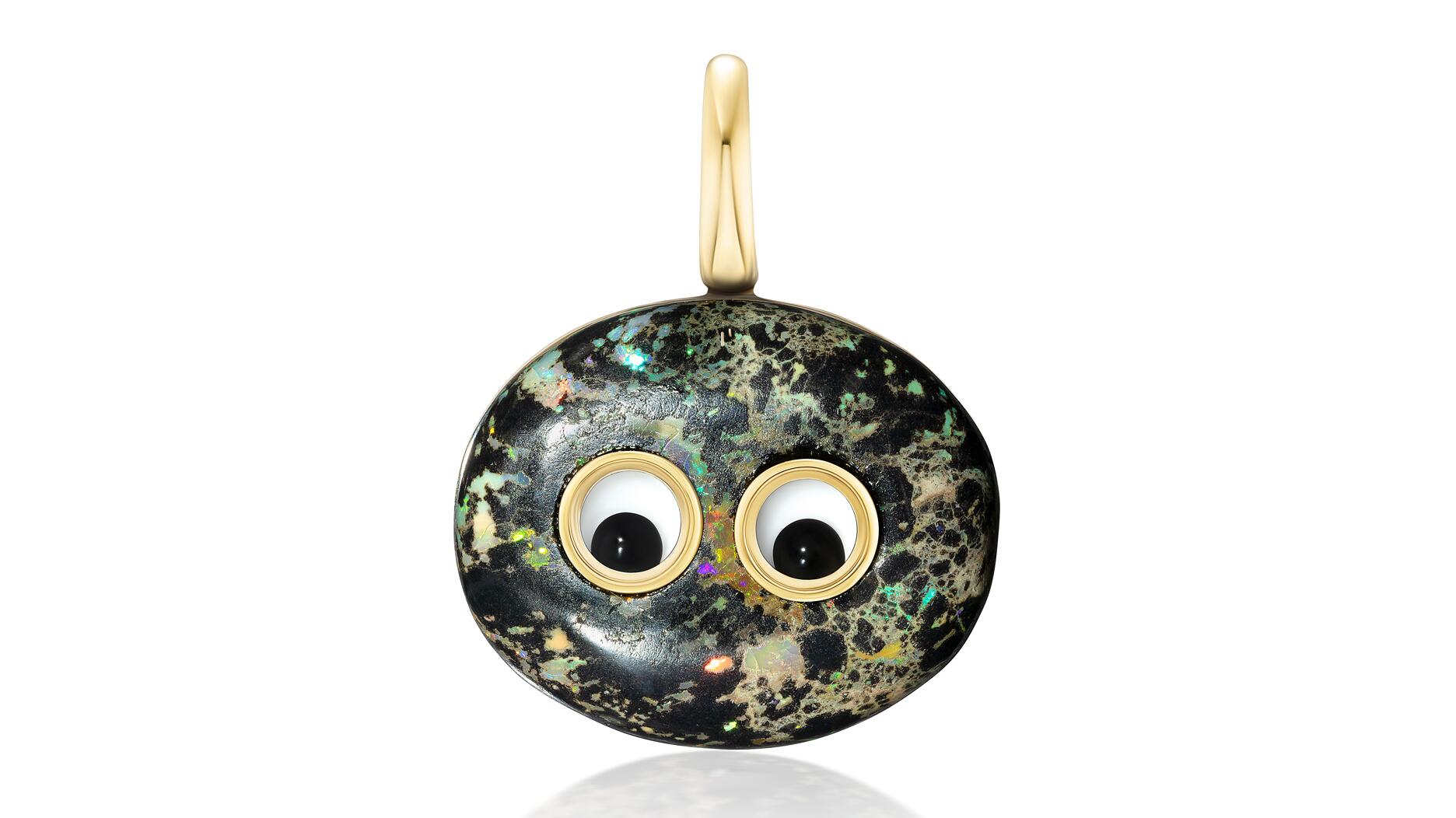The couple pleaded guilty to concealing at least $127 million in cash transactions at its precious metals businesses.
Postcard Montana: Heading West to See a Sapphire Mine
Senior Editor Brecken Branstrator recounts the gemstones she handled and the sites she took in on a recent trip to Big Sky Country.

Two weeks ago, I had the absolute pleasure of traveling to Montana for work. It was my first time anywhere near the Northwestern U.S., and I would happily go back.
Potentate Mining invited me to visit its Rock Creek sapphire mine, and I jumped at the chance, eager to take advantage of the opportunity since Montana sapphires are playing a big part in the increasing popularity of American gems.
Rock Creek sapphires come in dozens of different colors, including fancies like pinks and oranges, classic blues and the teal hues so specific to the region.
Potentate currently holds what it says is the largest sapphire-producing land package in the western hemisphere through two properties in southwestern Montana: one at Eureka Gulch, the initial site where it has mined since 2011 and now houses just its office and processing plant, and one at West Fork Rock Creek, where it has mined since 2016.
Director of Marketing Warren Boyd walked me through the mine’s processing plant at Eureka Gulch, allowing me to see the ore travel through the machines to be separated by size, cleaned and then land in the hands of employees for further processing.
He also took me to the main mining site at West Fork Rock Creek, not far from Eureka Gulch in mileage but still a bit of a drive as the roads separating the two sites wind around the Montana hills along Rock Creek.
This part of the visit was fascinating for a few reasons, the first being that a few buildings leftover from turn-of-the-century mining operations remain. I loved seeing the still-standing history of the place, evidence of its importance in the American gemstone sector.
A post shared by National Jeweler (@nationaljeweler) on Aug 1, 2018 at 7:37am PDT
The mining being done at West Fork Rock Creek is completely different from what I have seen before, largely because the company is surface mining there since the soil is so rich, rather than digging down to develop underground mines.
Under Montana law, Potentate is only allowed to disturb 5 acres at a time, so the company is careful as it begins mining an area to keep the topsoil nearby to help in the rehabilitation process.
Potentate will streamline processing by installing a new plant at West Fork Rock Creek so the ore doesn’t have to be trucked along those meandering mountain roads to Eureka Gulch. It should be completed and operating within the next few weeks.
Boyd said this summer will be a slower production season as they continue to focus on moving the processing from Eureka Gulch to the main property at West Fork Rock Creek.
Most Rock Creek sapphires are smaller in size; larger stones and those with fancy colors or saturated color are rare. According to Boyd, about 70 percent of production is in small sizes while the remaining 30 percent will produce polished sapphires ranging from about 0.75 to 10 carats.

Right now, Potentate plans to keep production steady while it works to build demand and find partners, Boyd told me.
He said it’s important for the company to build a strong base inventory so it can attract the major merchandisers, which want the assurance of a consistent supply so consumer demand can be met.
The mine operators also are working to develop a brand, focusing on the mine’s ability to produce some of the country’s finest gem-quality sapphires as well as their responsible sourcing and environmental responsibility. This includes not only the rehabilitation efforts but also the fact that, according to Potentate officials, there is no chemical pollution at the site.
They already have found a few key partners to work with, including Americut Gems, which offers the “All-American Sapphire”—mined, cut and polished in the United States.
Potentate’s operators also work with gemstone cutter Jeff Hapeman of Earth’s Treasury, who specializes in American gemstones.
Hapeman told me the reason he loves working with Rock Creek sapphires is the same reason I think the people who know about them love them—their array of colors. He noted, though, that aspect of the stones’ broad palette can make it harder to market them, as it appears almost no two stones are exactly alike.
“I often tell people that it takes about 300 sapphires of one hue, say blue-green, before I can find a perfectly matched pair.”
When it comes to sales, Hapeman told me he purposefully markets to buyers who are looking to get away from the gemstones everyone else is buying, and while their tastes can vary pretty widely, he said the teals and aqua blues are popular, generally in the lighter to medium saturations.

During my time out West, I also briefly visited Bozeman, Montana, home of The Gem Gallery, a retailer that has created a niche for itself by specializing in Montana sapphires.
Store owner Don Baide also is the new owner of the Vortex Yogo sapphire mine near Lewistown.
While I didn’t get a chance to visit that mine, I enjoyed not only getting to see The Gem Gallery’s beautiful downtown store but also getting an update from Baide’s son, Jason, and seeing some Yogos in person.
Store and mine owner Don Baide still is in the process of bringing the Vortex site into compliance before they can fully resume operations, but they seem excited to bring more Yogos—deep blue in color and loved by many—to the market and to establish trade partners to carry them and build consumer awareness.
(For more on Yogo sapphires, check out the latest issue of GIA’s Gems & Gemology, where the beautiful, deep blue stones got the cover treatment.)
All in all, there are some interesting developments in the Montana gem scene.
With the increase in mining-related activities, the growing interest in American-mined gems and the ability to trace them from mine to market, and, of course, their beauty, there seems to be a lot of upside for Montana sapphires.
I look forward to seeing how the market for the state’s gorgeous sapphires grows, and I wouldn’t say no to another trip out to the wild, amazing West either.
Because I still can’t stop thinking about how beautiful that state is, here’s a photo I took from a few personal days at Glacier National Park in Montana.

The Latest

Consumers shared concerns about prices, inflation, tariffs, trade, and politics in the survey’s write-in response section.

In February 2026, the auction house will move its headquarters to the former Steinway Hall, a neoclassical landmark on Billionaires’ Row.

How Jewelers of America’s 20 Under 40 are leading to ensure a brighter future for the jewelry industry.

The new show will take place Jan. 23-25, 2026.


The former BHP Billiton leader and Gemfields chairman is remembered for his influential leadership throughout his 50-year mining career.

The LVMH-owned brand has partnered with the costume design union to revamp its award for 2026.

Roseco’s 704-page catalog showcases new lab-grown diamonds, findings, tools & more—available in print or interactive digital editions.

The luxury titan inked a deal to acquire an initial minority stake in the jewelry manufacturer with a pathway to full ownership by 2032.

The company’s curation of unsigned vintage and estate jewelry debuted at the Bloomingdale’s in Costa Mesa, California.

In the recent multi-shipment seizure, CBP also found counterfeit Audemars Piguet, Moncler, and Chrome Hearts items.

Jewelers of America execs and National Jeweler editors discuss tariffs, the sky-high gold price, and the engagement that broke the internet.

The luxury goods company said founder Ippolita Rostagno will remain at the brand’s helm.

Laura Burdese, who joined the Italian luxury brand in 2022, will take on the role in July.

Need a gift for the cat lover who has everything? Look no further than our latest Piece of the Week.

It purchased the “Grosse Pièce,” an ultra-complicated Audemars Piguet pocket watch from the ‘20s, for a record-breaking price at Sotheby’s.

The lab-grown diamond grower now offers custom engagement and fashion jewelry through its Kira Custom Lab Jewelry service.

Chandler got his start at Michelson Jewelers and has served as DCA president and CEO since 2001. He will retire at the end of the month.

The boutique is slated to open this week inside Terminal 8, offering pre-owned Rolex watches and more to international travelers.

Sponsored by Digital Monitoring Products

The special-edition egg pendant ingested in a New Zealand jewelry store was recovered after a six-day wait.

Associate Editor Natalie Francisco plays favorites with Piece of the Week, selecting a standout piece of jewelry from each month of 2025.

The “Love and Desire” campaign is inspired by the magic that follows when one’s heart leads the way, said the brand.

Two awardees will receive free tuition for an educational course at the Swiss lab, with flights and lodging included.

Berta de Pablos-Barbier will replace Alexander Lacik at the start of January, two months earlier than expected.

Sotheby’s held its first two jewelry sales at the Breuer building last week, and they totaled nearly $44 million.

Winners will receive free registration and lodging for its fourth annual event in Detroit.




























